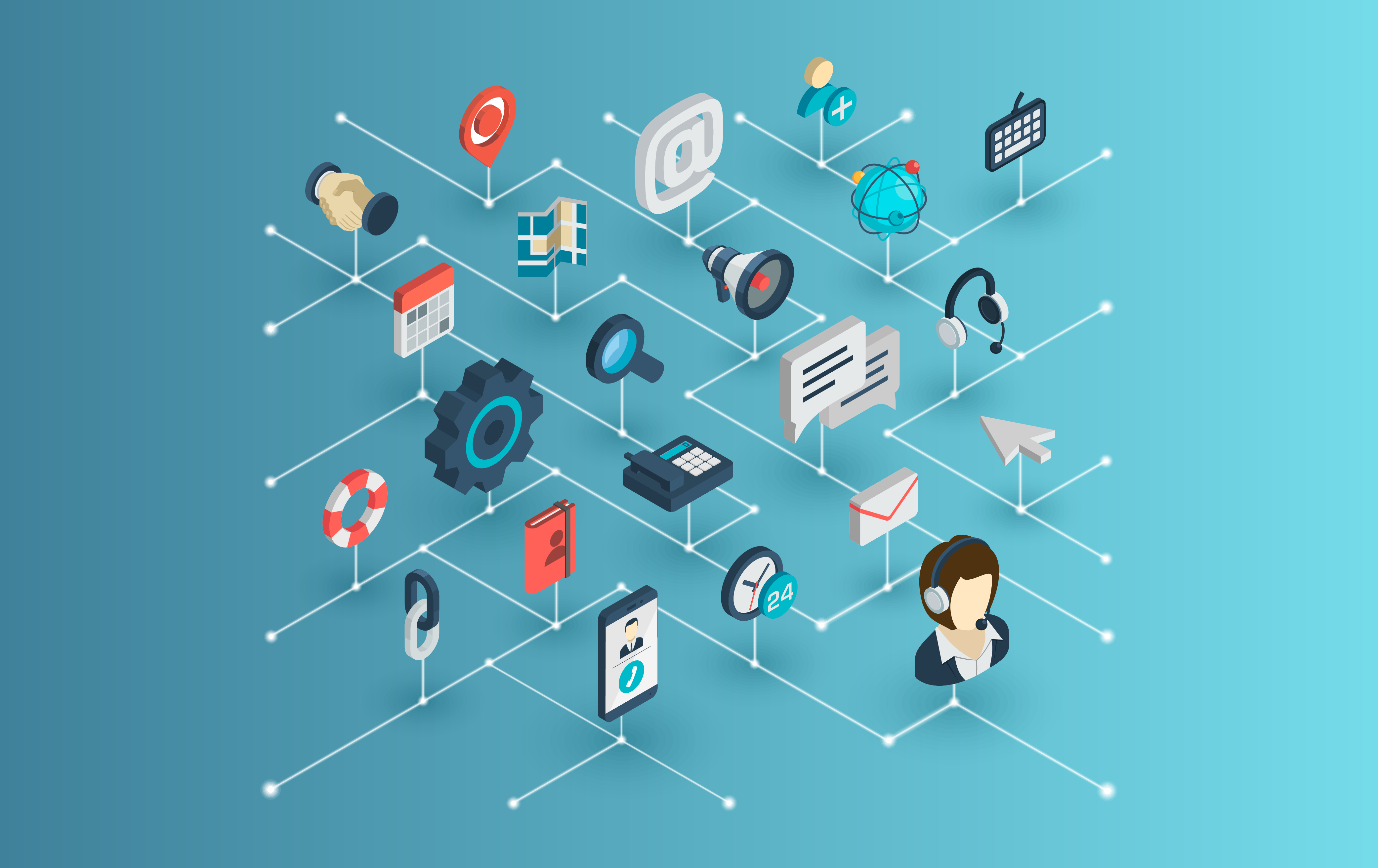It’s hard to deliver excellent customer service with siloed call center systems. Take it from me.
Back when I worked in a call center during college, we were asked to use six different applications throughout our shift and to support customers. And none of them integrated with one another. This meant we (the customer service reps) had to jump between applications to find answers and information while handling an interaction. It was a nightmare!
Things got jumbled. Not to mention, we lost significant time dealing with the inefficient process. Ultimately, our lack of integration hindered us from being able to deliver good customer service.
But digital transformation and unified tech stacks can do wonders. Research shows that 35% of executives claim that digital transformation lets them to better meet customer expectations. And it’s boosted their operational efficiency by nearly 40%.
When you invest in the right call center systems, you can experience the same benefits. Here’s how.
10 Tools and Features That Make Up Call Center Systems
Call center systems are more than just a phone service. They’re rich with tools and features that enable better service and empower agents in their work. Here are a few:
1. Auto-dialing Tools
Automate outbound calls to avoid manual dialing. Call center systems with auto-dialing tools, like predictive dialers or power dialers, save time and maximize your agent productivity.
2. CRMs (Customer Relationship Management)
Consider this: 95% of companies agree that CRMs are their most effective tool for customer service productivity. That’s a lot! CRMs help you organize and centralize all of your customer data so you can personalize interactions and foster stronger loyal customer relationships.
3. Dashboards and Analytics
Gain valuable insights into call center performance and customer behavior with analytics, reporting, and a clear dashboard in your call center systems.
4. WFM (Workforce Management)
WFM tools help you optimize agent scheduling and resource allocation for peak efficiency. Use AI-backed WFM to automatically forecast call volumes and adjust schedules throughout the day so you can ensure customers always have support.
5. Help Desks
Your customers don’t want to deal with the hassle of a phone call to get help. Help desks let you offer more self-service and timely assistance to customers facing issues or seeking information, integrating all of your channels in one concise space.
6. Softphone and Mobile Apps
Remote work, in some capacity, is here to stay. Grant your agents the flexibility and accessibility to work remotely and take calls anywhere. With softphone and mobile apps, all your agents need is internet access and they can be available to customers.
7. IVRs (Interactive Voice Response)
IVRs route calls with more efficiency and provide basic self-service options for customers. And then, by adding IVAs, you can give customers personalized help without bothering an agent.
8. Call Scripting
A call script guides the flow of a call, helping agents hit key talking points as they help customers. This ensures consistency and accuracy in customer interactions and supports agents in focusing on the task at hand.
9. Call Recording
Training is critical to maintain quality assurance and agent performance. Call recordings can help. Capture conversations for training purposes, quality assurance, and compliance.
10. Automation
Workflow automation lets call centers streamline repetitive tasks to improve efficiency and save agents from tedious work.
Want to boost your call center operations? Check out this blog on the benefits of outsourcing.
5 Benefits of Connected Call Center Systems
Call center software can be transformative for your management, your customer experience, and your team. With connected call center systems, you can:
1. Be a Better Manager
Call center management is hard on the best of days. It’s made more difficult if you have disjointed call center systems and clunky tech. But connected call center systems help you be a better manager. Make better decisions using centralized data and analytics. Prepare your team for more efficient work with workforce management. And then, invest in coaching and training through call recording and monitoring.
With an integrated view, you have the support you need to juggle the tasks on your plate and provide stronger guidance to both agents and customers.
2. Help Customers Find the Right Solution — Faster
Connected call center systems make it far easier to work faster and smarter as a team. With call routing, guide customers to answers faster. Then, improve self-service to empower customers to answer their questions for themselves. And with omnichannel solutions, meet customers wherever they are, offering the same unified experience no matter what channel they use to reach you.
3. Increase Agent Satisfaction
When your tech works for you (not against you), your agents will be happier. Their workflow gets easier, and that leads them to work more productively. They’re more empowered to find solutions for customers and succeed in their goals. And they’re receiving more support from managers through training and coaching. All of these factors inevitably improve job satisfaction and engagement, reducing turnover and absenteeism.
4. Reduce Operational Costs
Connecting your call center systems makes you more productive. And when you can work more productively, you’ll reduce operational costs significantly.
Use WFM to optimize the number of staff needed at a given time so you’re not paying agents for idle time. And support more customers in a day through automation, call routing, and call scripting for faster, higher quality service. Over time, you’ll see inefficiencies and excess costs fall away.
5. Enhance Your CX With Personalization
It’s no secret that customers value personalization. As many as 86% of consumers say personalization plays a role in their purchasing decisions. And call center systems help. Collect better data and keep it central, empowering agents to make interactions more personal with greater context. Use customer data to suggest future purchases and offer proactive service. In the end, you’ll enhance your overall customer experience (and encourage loyalty).
Connecting Your Call Center Systems with a Cloud Call Center
One of the most effective ways to integrate and modernize your call center systems is by transitioning to a cloud-based solution. Cloud call centers offer all kinds of benefits, including scalability, flexibility, and accessibility for a distributed workforce. Save costs, cutting down on in-house tech. Operate efficiently as a remote or hybrid workforce and keep data protected by moving to the cloud.
With Broadvoice’s b-hive virtual call center, seamlessly connect your business communications and call center systems to create a unified CX suite. No matter your size, you can get all the features of a big brand call center system at an accessible price. And that’ll help you to lower operational costs, maintain enhanced security, and exceed customer expectations.











